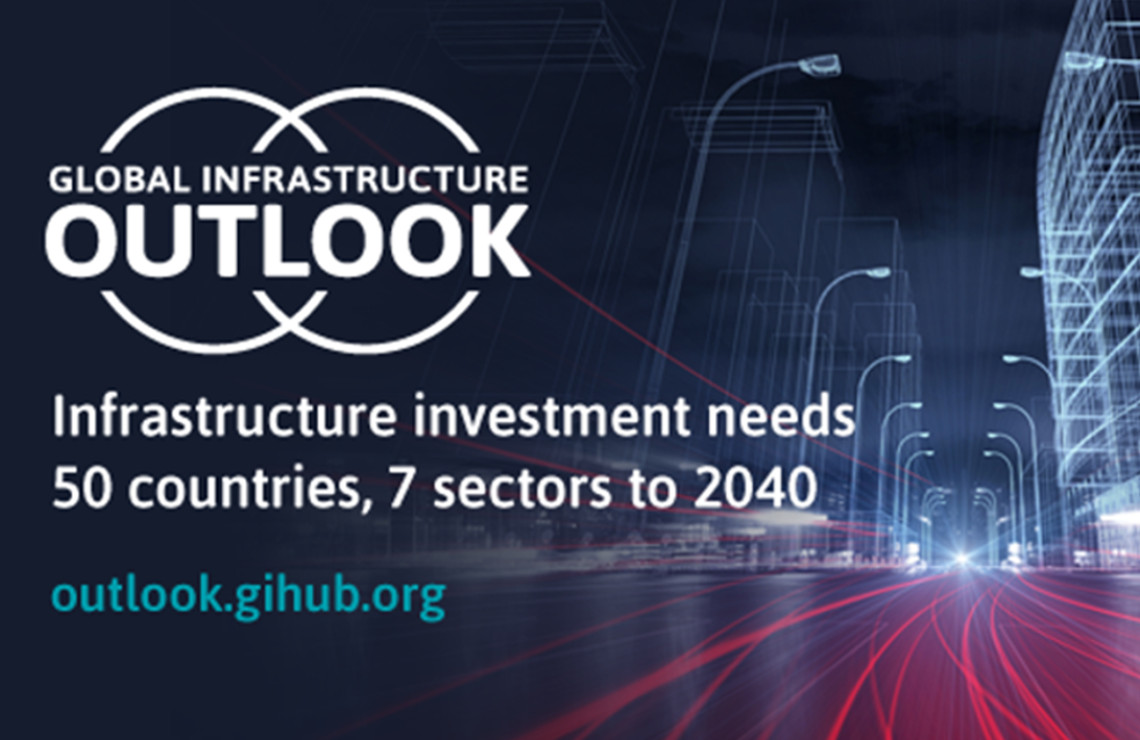922 results found
Featured results



More results
The data presented in this report show that progress has been achieved in important areas such as legislation, vehicle standards and improving access to post-crash care. This progress has not, however, occurred at a pace fast enough to compensate for the rising population and rapid motorization of transport taking place in many parts of the world.

The Global Toolbox provides an interactive inventory of MDB instruments, with their hyperlinks and comprehensive overviews, to support private investment across the globe.

World leaders gathering at the UN General Assembly in September 2015 adopted a much-heralded new set of development goals with the worthy aims of lifting communities across the globe out of poverty and improving lives, but 18 months later, new research from the Global Infrastructure Hub has revealed that on current investment trends we will fail, by a wide margin, to meet the electricity and water goals by 2030.
For this year s edition, we reached out to more than 10,000 people in 10 major global cities to ask about their everyday experiences with infrastructure services. How satisfied and safe do they feel with their roads and bridges, rail services and utilities? How engaged are they in the decision-making processes for new projects that can improve lifestyles and drive new economic growth?


For this year’s edition, we reached out to more than 10,000 people in 10 major global cities to ask about their everyday experiences with infrastructure services. How satisfied and safe do they feel with their roads and bridges, rail services and utilities? How engaged are they in the decision-making processes for new projects that can improve lifestyles and drive new economic growth?


This report presents case studies on successful Asian water utilities.

This study is a comprehensive, empirical analysis of the linkages between governance, institutions, and regional infrastructure.

The purpose of this manual is to contribute to improvements in the quality of infrastructure regulation.

Technologies that enable the capture of greasy waste from commercial and industrial facilities to convert into biodiesel.

The green bond market has seen exponential growth since its inception in 2007. In 2020, green bonds represented 60% of bond issuances for private investment in sustainable, primary infrastructure globally, mostly concentrated in developed regions.


This study explains why and how the creation of institutionalized citizen engagement will enhance public accountability, performance, and customer responsiveness in the Indian urban water and sanitation sector.


The higher risk profile of greenfield infrastructure, and lack of investment-ready project pipelines, make it challenging to deploy private investment to greenfield infrastructure.


The GI Hub is today launching its new report, Global Infrastructure Outlook, an analysis with Oxford Economics of infrastructure investment needs across 50 countries and 7 sectors to 2040.
This Guidance Note supports promoters, practitioners and other interested stakeholders in interpreting and implementing Standard 3 on Biodiversity and Ecosystems, as part of the EIB Environmental and Social Standards.

This Guidance note provides a set of selected voluntary policy recommendations that seek to help governments in tackling challenges related to mobilising private financing for infrastructure and SMEs.

This guidance note aims to explain key sector features of urban water supply and identify entry points for mapping governance risks.

The primary objective of this Technical Note is to provide guidance to utility companies either for improving the operations-phase implementation of a current environmental management system or for developing a system.

This Guidance Note supports promoters, practitioners and other interested stakeholders in interpreting and implementing Standard 3 on Biodiversity and Ecosystems, as part of the EIB Environmental and Social Standards.


Public-Private Partnerships (PPPs) are now being used in many countries to develop infrastructure projects.


The purpose of the Guide to Procurement (the Guide) is to inform the Promoters of a project whose contracts are financed in whole or in part by the European Investment Bank.




 AECOM
AECOM



